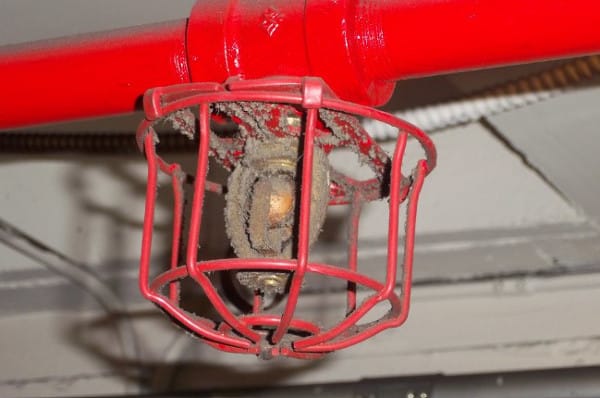From health hazard to downright gross, here’s what lurks in the grime coating fire sprinklers—and how to get rid of it
Update: The SprinklerVac has been discontinued. Read this guide to the current methods of cleaning fire sprinklers, including using compressed air.
The swankiest hotel and the most hygienic hospital often share the same dirty little secret: uncleaned sprinkler heads. But cleaning sprinkler heads can make property owners and building maintenance crews nervous, and with good reason. National Fire Protection Association (NFPA) standards prohibit physically touching sprinklers when cleaning them because they can be damaged—and accidentally triggering one can drench a space with hundreds of gallons of water within minutes.
But if sprinkler heads aren’t cleaned and maintained properly, not only may they fail to operate effectively—but they can be, well, just plain gross. Dirty sprinklers also put property owners afoul of the fire code, which can lead to citations and fines.
In this blog, we explain why regularly cleaning sprinkler heads is important by showing you what dirty sprinklers may be transmitting into the air you breathe.
Fair warning: you might not want to read this blog while you’re eating.
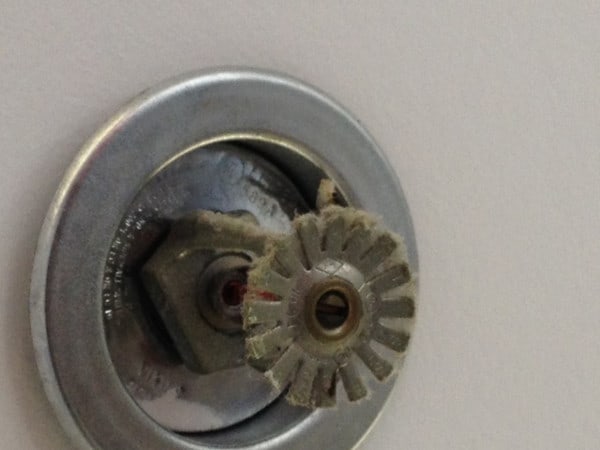
Failing to clean dirty fire sprinkler heads can create a false sense of security
Removing dust, dirt, and grime from fire sprinkler heads is uniquely tricky. It only takes a minor mistake to unleash major consequences—shattering the delicate glass bulb and dumping 25 gallons per minute of water into the room the sprinkler was meant to protect. Estimated damage: $1,000 for every minute the sprinkler discharges.
To quickly turn off accidentally discharging fire sprinklers and mitigate costly water damage, Shutgun sprinkler tools can shut down a sprinkler and even restore its ability to fight fires until the head is replaced. To learn more, you can read our previous blog: “How to Temporarily Stop a Damaged or Activated Sprinkler Head.”
But another problem is that dirty sprinkler heads give people a dangerously false sense of security. A buildup of grime can block, reduce, or distort water spray patterns, rendering them less effective at controlling or extinguishing fires. The buildup can also insulate the sprinkler’s thermal element that’s designed to burst or melt at a specific temperature, causing precious seconds to tick by before the sprinkler opens.
The basic health concerns of dust, dirt, and grime
There are also health concerns associated with layers of dirt and dust coating anything, including the fire sprinklers in your environment. Dirty sprinkler heads in places like hotels, restaurants, hospitals, offices, and your home can collect and ultimately re-transmit bacteria and viruses.
Dust mites—microscopic bugs that can make people sick—multiply rapidly in thick dust. A buildup of dust also typically harbors more than 45 toxic chemicals linked to respiratory, behavioral, and neuro-development problems.
What goes up must come down; gravity pulls accumulated dust and germs back to your level. Potentially infectious and irritating particles that build up on sprinkler heads are also recirculated by a building’s HVAC system. And since many people are afraid to clean sprinklers—NFPA 25: Standard for the Inspection, Testing, and Maintenance of Water-Based Fire Protection Systems requires cleaning them without touching them—sprinklers don’t get the same attention that most surfaces get.
From the 2017 edition of NFPA 25
A.5.2.1.1.1 In lieu of replacing sprinklers that are loaded with a coating of dust, it is permitted to clean sprinklers with compressed air or by a vacuum provided that the equipment does not touch the sprinkler.
Regularly removing dirt, dust, and grime from sprinkler heads not helps with infection control and improves indoor air quality. Here’s what may actually be growing on dirty sprinkler heads in these common places, ready to enter the air you breathe:
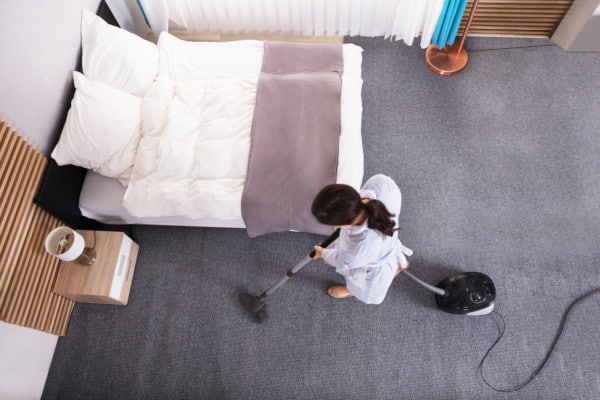
Guest habits can make hotel rooms—and their fire sprinklers—dirtier than they look
In the days of Instagram and VSCO, where a hotel’s appearance can make or break its reputation, housekeeping staff face an uphill battle. No matter how elegant the hotel, for some guests, staying under its roof brings out their most slovenly behavior. From unflushed toilets to urine-filled liquor bottles to dead birds left in a trash can, many hotel housekeeping personnel have seen it all. But what’s harder to see are the invisible germs and bacteria that can gather in hotel rooms thanks to guests’ gross habits.
And dust-covered fire sprinklers—cleaned less often than other parts of the room—can be a prime breeding ground.
Most hotels invest heavily in cleaning the obvious places: floors, sheets, bathroom surfaces. But since lodging properties never close, deep cleaning can only be done an average of two to four times a year. And even then, it’s hard to completely sanitize a place where hundreds of people sleep, shower, and do who knows what else every year. And again, dirty, “loaded” sprinklers simply may not activate on time.
Three devastating hotel fires in rapid succession in the 1980s highlighted the importance of automatic fire sprinkler systems and caused the hotel industry to reconsider its definition of “fire safe.” In 1980, an early morning fire at the MGM Grand Hotel in Las Vegas killed 85 people and injured more than 650, according to U.S. Fire Administration records. Three months later, an evening fire at the Las Vegas Hilton Hotel killed eight people and injured nearly 200. And in 1986, an afternoon fire at the Dupont Plaza Hotel and Casino in Puerto Rico led to 97 deaths and 150 injuries.
The lack of fire sprinklers at those hotels led to substantial code changes that let today’s guests rest easier with stricter mandates for fire sprinklers and smoke alarms in lodging properties. Since then, the Fire Administration reports that while an annual average of 3,900 hotel and motel fires occurred in the U.S. between 2014 and 2016, losses drastically dropped to an average of 15 deaths and 100 injuries each year.
But while there’s no denying the importance of fire sprinklers in hotels, it’s also easy to understand why housekeeping staffs find cleaning them a challenge. After all, no one wants to be responsible for the costly aftermath of an accidentally discharging sprinkler head.
Watch this video for a peek at the destruction—and unhappy guests—that accompanied a broken sprinkler head at a hotel:
Unfortunately, dirty fire sprinklers often become the elephant in otherwise sparkling hotel rooms—and those layers of forgotten dirt and grime may carry health hazards and stop or slow sprinkler activation in an emergency.
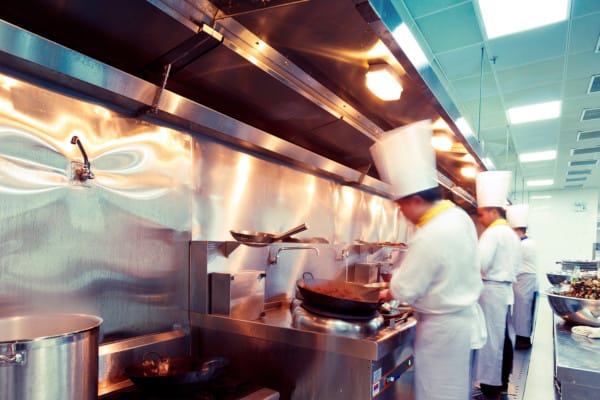
The importance of cleaning sprinkler heads in restaurants: sprinklers may harbor contaminants
Grease, oil, and other food residue spread quickly in busy restaurant kitchens, turning them into a potential breeding ground for harmful bacteria. And while a good kitchen team works tirelessly to maintain clean and hygienic floors and surfaces, the kitchen ceiling and its resident fire sprinklers aren’t always as easy to deal with.
The model fire codes require fire sprinkler systems in new bars, nightclubs, and restaurants, and in all properties where the total occupant load exceeds 300 people. NFPA requires sprinklers in all new nightclubs or similar assembly occupancies and the retrofitting of existing ones with an occupant load greater than 100.
And many smaller restaurants still choose to install sprinklers, taking advantage of the relative affordability of common wet systems, insurance discounts, and vastly greater fire safety.
Between 2010 and 2014, NFPA states that eating and drinking establishments suffered an estimated annual average of 7,410 fires, leading to an average of three deaths, 110 injuries, and $165 million in property damage every year. More than 60 percent of fires were started by cooking—but failure to properly clean contributed to more than 20 percent of them, with grease-laden surfaces creating a fire hazard that enabled blazes to spread faster.
Unfortunately, ceiling surfaces can transform into overhead traps in a restaurant kitchen—catching airborne grease aerosols from the grill and humidity from the sinks and dishwashers. These naturally sticky materials then trap other debris floating in the air like dust, dirt, and bacteria.
Fire sprinklers installed on the ceiling may not always be in a food preparation area, but they can also harbor plenty of germs and contaminants that pose a danger to patrons and staff, causing colds, cases of flu, and foodborne illnesses.
Remember, it’s only a matter of time until gravity pulls ceiling grime down to the food level. The HVAC system can make matters worse as the circulating air dislodges potentially harmful particles collecting on the sprinklers and scatters them around the restaurant.
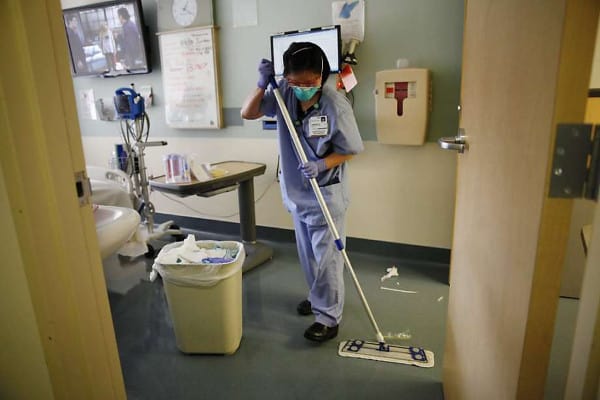
Potentially lethal bugs can cling to fire sprinklers in hospital rooms for weeks
Since the introduction of germ theory, maintaining a clean environment in a hospital has been a top priority. Keeping hospitals clean isn’t just about aesthetics—it’s a serious patient and worker safety issue.
Any cough, splash, or splatter can send germs or bacteria flying into the air. Potentially deadly infections such as superbug Candida auris can cling to almost any surface in hospital rooms for weeks before infecting another patient, from fire sprinklers to bed curtains to the TV remote.
The New York Times reports that one in 25 people contracted a hospital-borne infection in the U.S. on any given day in 2014. In an environment where nasty germs and bacteria are regular guests, the fight against contamination comes down to every hospital fixture and feature.
Unfortunately, no matter how meticulously cleaning crews disinfect, there are always places germs can hide. Fire sprinkler heads, which may sit out of sight and often out of reach, are rarely included in routine cleanings. And even if they were, the kind of cleansing required to sanitize a contaminated hospital space would butt against NFPA rules to avoid touching the sprinkler head while cleaning it.
The Joint Commission, a nonprofit organization that accredits and certifies tens of thousands of hospitals in the United States, penalized nearly two in five hospitals for dirty or damaged fire sprinkler heads in the first six months of 2017.
NFPA mandates that all new healthcare occupancies must install automatic sprinkler systems, but some existing hospitals are grandfathered out of the requirements. Even so, many opt to install them anyway, realizing that sprinklers’ ability to control fires is vital in a facility with a large number of immobile patients, expensive equipment, and explosive substances like oxygen tanks.
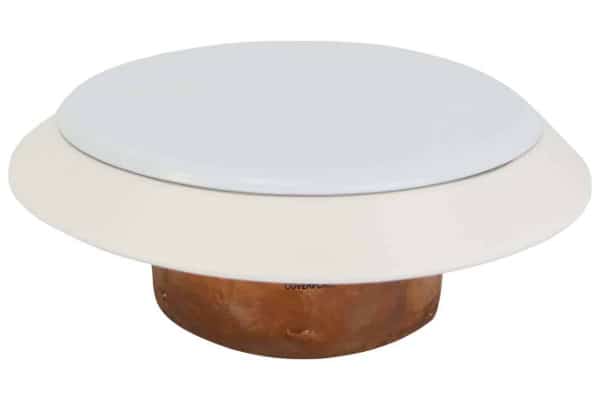
Certain concealed head sprinklers can make it easier for sanitary environments like hospitals to keep their fire sprinklers clean. The cover plate is designed to detach at a temperature that’s roughly 20 degrees lower than the sprinkler head hidden beneath, allowing the head to also deploy and extinguish the fire. The plate’s smooth surface gathers less dust and cleans more easily, but provides the same level of fire safety as any other fire sprinkler.
To learn more about concealed head sprinklers in these settings, check out our previous blog, “The Benefits of Concealed Fire Sprinklers in Cleanrooms and Sanitary Environments.”
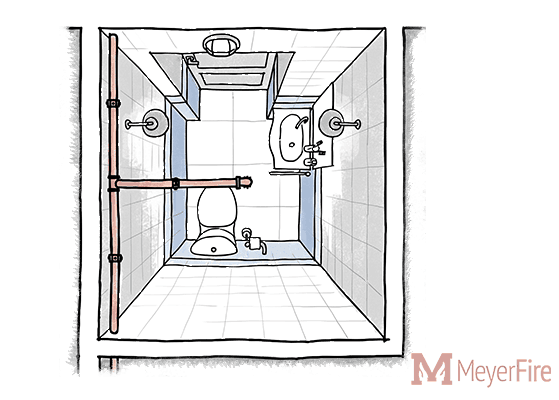
Bathroom fire sprinklers can teem with nasty bacteria and germs
NFPA and the model building codes agree that fire sprinklers can be omitted from bathrooms that are smaller than 55 square feet under certain circumstances, such as type of occupancy and the combustibility of the construction materials they contain.
Here’s why: the ceramic and non-porous surfaces typically found in bathrooms are less combustible than other building materials, and the risk of a fire starting there is relatively low. For instance, the 2018 edition of NFPA 101: Life Safety Code states that only 1 percent of apartment fires originated in a bathroom—and none of those included deaths, injuries, or significant property losses (A.30.3.5.4).
But when sprinklers are installed, their location high above a toilet doesn’t render them exempt from the nasty germs and bacteria multiplying around the space.
Most people are blissfully unaware of the degree of filth that’s secretly flourishing in bathrooms in office buildings, homes, or public areas. Bacteroidaceae, E.coli, streptococcus, and salmonella are just a few of the nasty bacteria and potentially infectious germs that invisibly coat bathroom surfaces by the thousands. All it takes is a simple flush of the loo with the lid open to release them into the air.
Some remain airborne droplets while others settle on nearby surfaces, including fire sprinklers. In places like homes and gyms, the shower is another prime source of contamination, spraying aerosolized water droplets that contain bacteria and fungus from both tap water and bacteria that are washed off the human body. (We bet you’re looking at the condensation that forms on your mirror after you shower a little differently now, aren’t you?)
Mold and mildew can grow on bathroom surfaces as well, especially in poorly ventilated spaces. Bathroom humidity can also cause improperly maintained fire sprinkler heads to clog with rust.
Moral of the story: most people know that maintaining clean, germ-free bathrooms involves disinfecting the toilet. But routinely cleaning fire sprinklers is also important to keeping nasty bugs from multiplying at unhealthy rates and recirculating around your home or office.
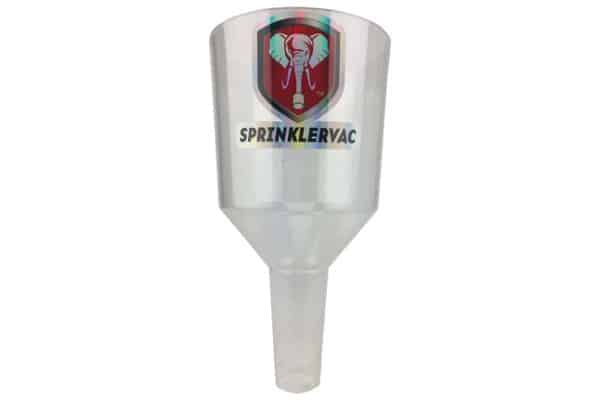
SprinklerVac reduces the risk of damage and accidental sprinkler discharge with touchless vacuum cleaning
Update: The SprinklerVac has been discontinued. Read this guide to the current methods of cleaning fire sprinklers, including using compressed air.
To maintain reliable fire protection, truly filthy, corroded, or grease-loaded sprinkler heads must undergo the arduous process of replacement, which involves hiring a professional contractor and draining, refilling, and testing the system. But if the dirt level isn’t very mild, NFPA 25 (A.5.2.1.1.1) explicitly allows two simpler and less expensive options for cleaning the heads: compressed air or a vacuum that doesn’t physically touch the sprinkler.
Compressed air can be convenient, but be careful to not bump the bulb with the can, which could damage or activate the sprinkler. It works on light-to-moderate loading on sprinklers pretty well.
There’s another simple and effective way to clean fire sprinklers that meets NFPA standards. In 2015, life safety industry veteran James Middleton introduced the SprinklerVac, the first touch-free vacuum attachment designed for cleaning sprinkler heads.
For step-by-step instructions on using the patented SprinklerVac, check out our previous blog, “How to Clean Dirty Fire Sprinklers.” But here’s a quick overview:
The SprinklerVac attaches to any standard vacuum with a typical home vacuum hose (using a 1.25-inch connection) or industrial vacuum hose (a 1.5-inch connection). Its see-through design makes it easy to maneuver near and over the sprinkler head without bumping it; in fact, its logo—shaped liked a pendent fire sprinkler when facing away from the user—was carefully designed to guide placement. Once it is turned on, the Vac’s V-shaped cup gently whirls away dirt, dust, cobwebs, and grime without disturbing the delicate glass bulb that could trigger a flood.
The SprinklerVac works for most sprinkler heads on the market, from older ones with longer escutcheons to newer, low-profile heads to heads with baffles. It can also be used to clean smoke detectors and recessed and pendant lights.
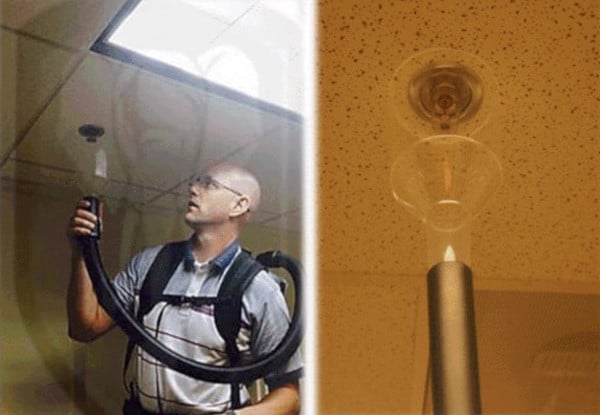
Cleaning sprinkler heads is important
Uncleaned fire sprinkler heads put people and property at risk from fire and potential health hazards.
Questions about QRFS products or need a brand or item that’s not in our online inventory? Just call us at +1 (888) 361-6662 or email support@qrfs.com.
This blog was originally posted at blog.qrfs.com. Check us out at Facebook.com/QuickResponseFireSupply or on Twitter @QuickResponseFS.


